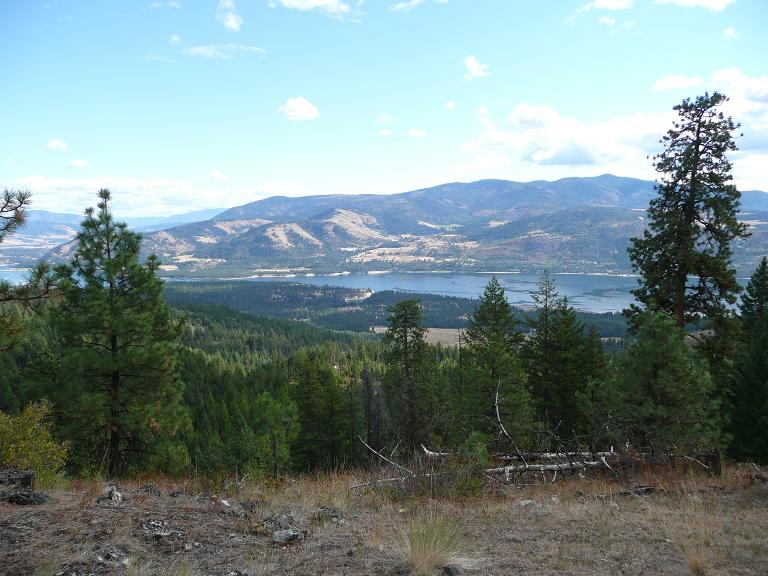
Federal judges are increasingly endorsing the methods and goals of the U.S. Forest Service’s collaborative forest management process, as evidenced by two recent U.S. District Court rulings.
Evergreen magazine’s Jim Petersen provided the analysis in a recent online article. Both cases in question involved the Alliance for the Wild Rockies, an advocacy group based in Helena, Montana, that has actively litigated Forest Service decisions for decades.
The decisions came on appeal from judges considering these cases:
- Alliance for the Wild Rockies v. Jim Peña (U.S. Forest Service Region Six) and Rodney Solomon (Colville National Forest)
- and Alliance for the Wild Rockies v. Mary Farnsworth (Idaho Panhandle National Forest), Leanne Marten (Forest Service Region One) and Thomas Tidwell (now former-chief, U.S. Forest Service).
Petersen and others believe the decisions represent a “sea change” in how federal judges view the collaborative process approved by Congress and utilized for forest restoration projects nationwide.
Here is Petersen’s summary:
“First among three significant changes: Federal judges are becoming more comfortable with the congressionally-blessed collaborative process that encourages diverse citizen-stakeholder groups to partner with the Forest Service in identifying, designing and monitoring forest restoration projects intended to restore natural resiliency in forests that hold too many trees for the carrying capacity of the land.
“Second: Their rulings reflect a welcome sensitivity to and appreciation for the demanding and difficult work these all-volunteer groups are doing, as well as a much-improved understanding of observable forest decline and, likewise, a willingness to apply case law in ways that allow collaborative forest restoration projects to proceed.
“Third: The U.S. Forest Service is doing much better project planning work than it did a decade ago. It is mastering the Rubik’s Cube of environmental law and regulation that, for years, seemed to defeat its best laid plans at every turn.”
At issue on the Colville National Forest was the North Fork Mill Creek A to Z Project, a 12,802-acre forest restoration proposal developed over several years by the Forest Service, Vaagen Brothers Lumber, Stevens and Pend Oreille counties, and the Northeast Washington Forestry Coalition, a group that included elected officials, tribal leaders, outdoor recreationists, lumbermen and conservationists from the Colville area.
The work plan utilized a variety of tree-thinning techniques intended to increase the wildlife habitat, restore aspen groves, reduce the risk of insect and disease outbreaks, improve stand productivity and increase the number of tree species.
On appeal, the Ninth Circuit affirmed an Eastern District Court ruling that denied the Alliance’s request for a preliminary injunction halting work.
Judge Milan Smith Jr. wrote, in part: “The panel held that Alliance had not demonstrated serious questions, much less a likelihood of success, with respect to any of its National Forest Management Act [NFMA] or National Environmental Policy Act [NEPA] claims.”
Petersen explained more, including this:
“More specifically, the Ninth determined that the Alliance had not successfully challenged the Forest Service’s decision to use “habitat as a proxy” for assessing the presence of pine martens and fishers. The Colville Forest Plan designated the pine marten as a management indicator species – a proxy for other species that have the same habitat needs and population characteristics. The fisher is such a species. Hence, the agency’s decision to select the pine marten.
“The Ninth also held that the Alliance had not raised serious questions or demonstrated a likelihood of success on the merits of its claim that the Forest Service had violated NEPA regulations in its sediment analysis, open road density and snow-intercept cover analyses. That such documents exist and are required by NEPA will come as a great surprise to those who simply assume that loggers can cut timber whenever and wherever they choose.”
Read the rest of Petersen’s detailed analysis here.
On the Idaho Panhandle National forest, Judge B. Lynn Winmill gave the go-ahead to two post-fire salvage sales and restoration projects and appeared “to put environmental litigators on notice that his court reads the same daily newspapers all Idahoans read, and is thus well-aware of citizen-led collaborative efforts to pull the state’s National Forests back from the brink of ecological collapse,” according to Petersen.
“In the West, fuel and climate are combining to create intense wildfires,” the judge wrote. “Fuels are increasing at an alarming rate as invasive plant species spread across the landscape, while at the same time climate change is lengthening the fire season. This means burnt timber is becoming a major feature of our National Forests.
“If trees can be logged simply because they burned, we will reap massive clear-cuts. But small projects, fully vetted and properly designed to mitigate impacts, may be valuable in reducing hazards and funding reforestation efforts. The Tower and Grizzly projects fit that mold.”
Is there a sea change among the judiciary with regard to collaborative forestry projects? Give Petersen’s article a close read and let Treesource know what you think.

Leave a Reply